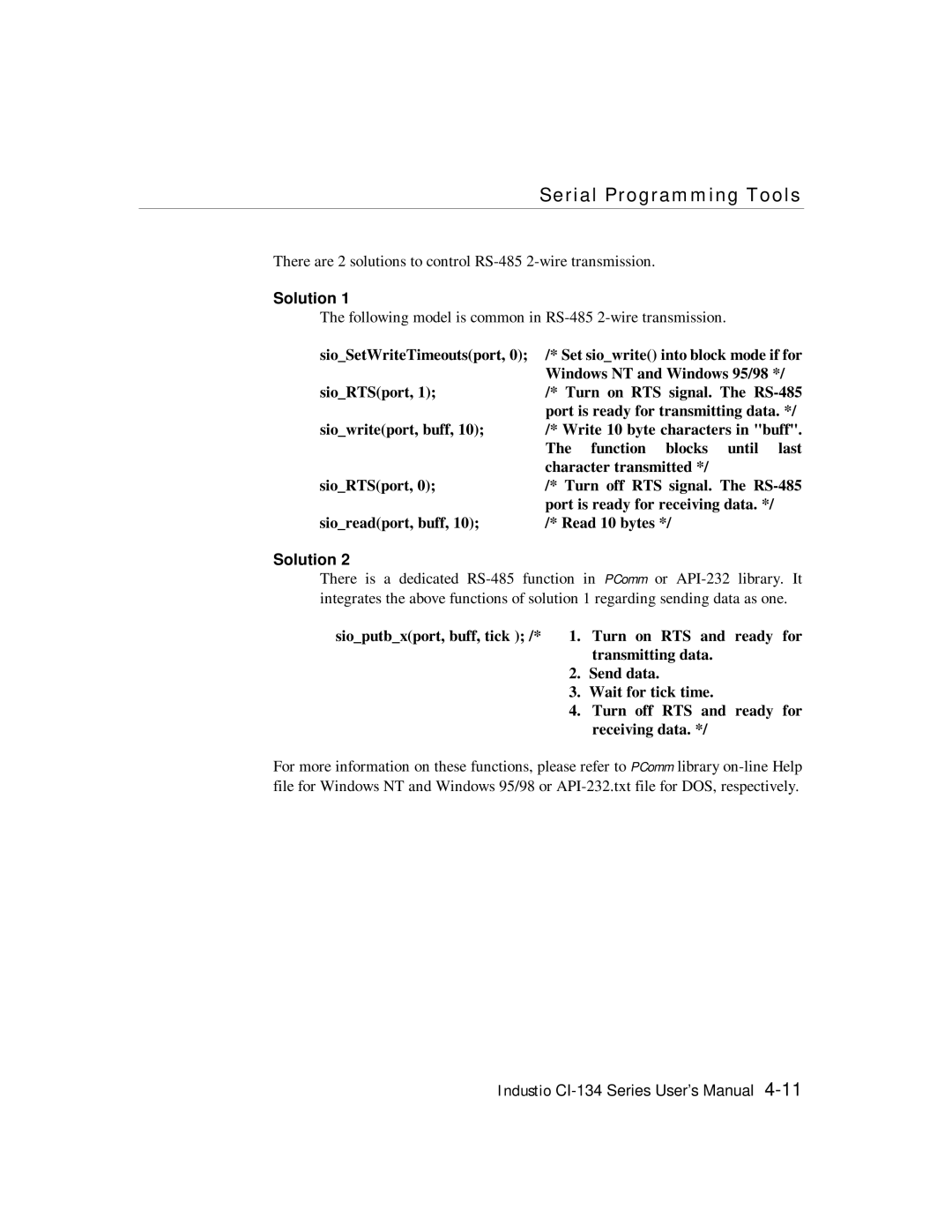Serial Programming Tools
There are 2 solutions to control
Solution 1
The following model is common in
sio_SetWr iteTimeouts(por t, 0); | /* Set sio_wr ite() into block mode if for | |
| Windows NT and Windows 95/98 */ | |
sio_RTS(por t, 1); | /* Tur n on RTS signal. The | |
| por t is r eady for tr ansmitting data. */ | |
sio_wr ite(por t, buff, 10); | /* Wr ite 10 byte char acter s in " buff" . | |
| The | function blocks until last |
| char acter tr ansmitted */ | |
sio_RTS(por t, 0); | /* Tur n off RTS signal. The | |
| por t is r eady for r eceiving data. */ | |
sio_r ead(por t, buff, 10); | /* Read 10 bytes */ | |
Solution 2 |
| in PComm or |
There is a dedicated | ||
integrates the above functions of solution 1 regarding sending data as one.
sio_putb_x(por t, buff, tick ); /* | 1. | Tur n on RTS and r eady for |
|
| tr ansmitting data. |
| 2. | Send data. |
| 3. | Wait for tick time. |
| 4. | Tur n off RTS and r eady for |
|
| r eceiving data. */ |
For more information on these functions, please refer to PComm library
